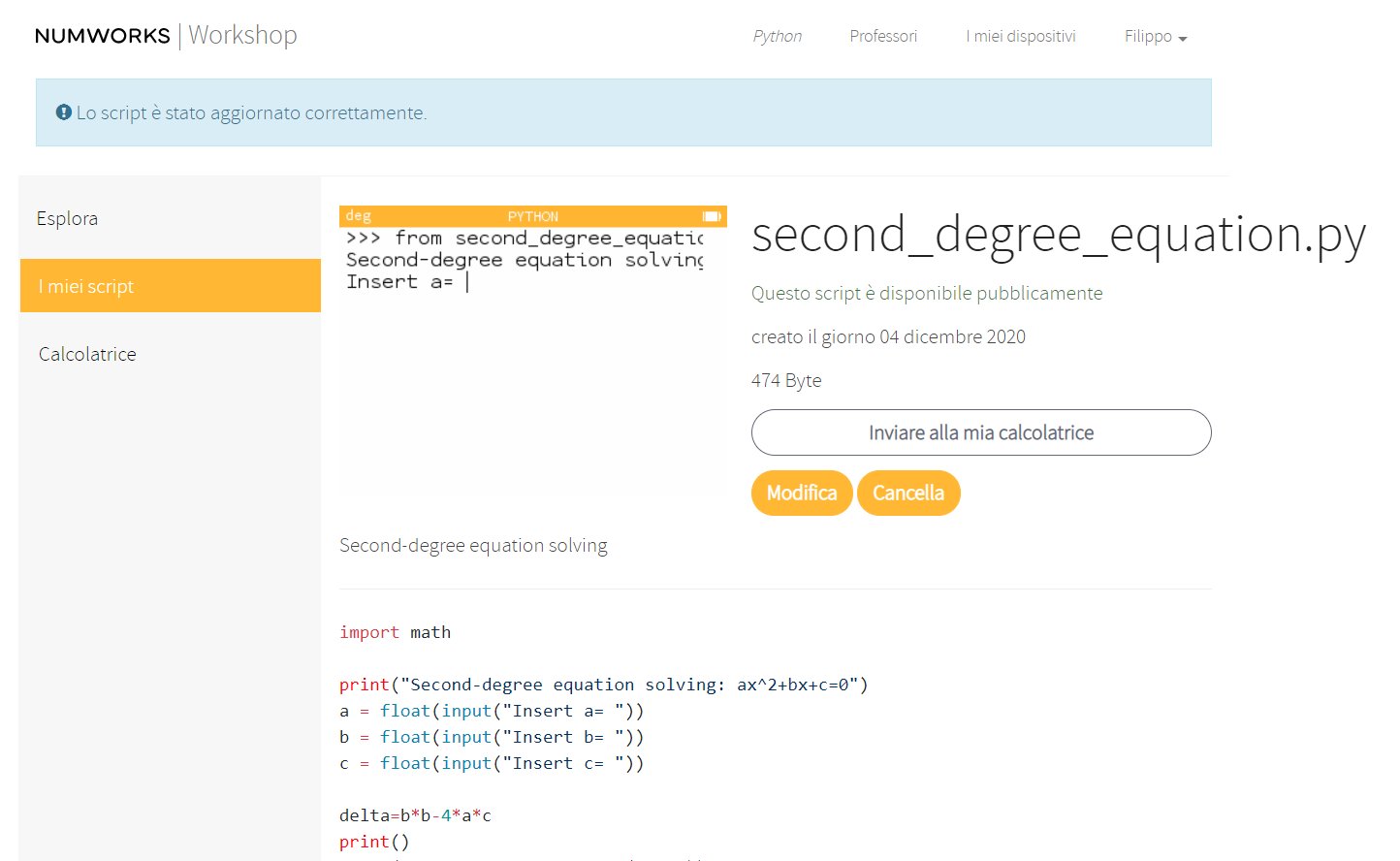I report a simple script in Python, about second-degree equation solving.
import math
print("Second-degree equation solving: ax^2+bx+c=0")a = float(input("Insert a= "))b = float(input("Insert b= "))c = float(input("Insert c= "))
delta=b*b-4*a*cprint()print("Discriminant= " + str(delta))if (delta >= 0): x1=(-b+math.sqrt(delta))/(2*a) x2=(-b-math.sqrt(delta))/(2*a) print("Solutions are:") print("x1= " + str(x1)) print("x2= " + str(x2))else: print("Impossible! Roots are imaginary")
You can download Python from https://www.python.org/downloads/ and install it on a Windows PC, Linux or Mac. It is an interpreted programming language, this means that as a developer you write Python (.py) files in a text editor and then put those files into the python interpreter to be executed. The way to run a Python file is open command line of your computer, navigate to the directory where you saved your file, and run. On a Windows PC you can use the Command Line (cmd.exe): C:\Users\Your Name>python helloworld.py or you can use a Python Shell.
For example I can load this script into my Numworks calculator and use it in class.

A further application in Python solves both first degree and second degree equations:
import math
print("Second-degree equation solving: ax^2+bx+c=0")
print("First-degree equation solving (choose a=0): bx+c=0")
a = float(input("Insert a= "))
b = float(input("Insert b= "))
c = float(input("Insert c= "))
delta=b*b-4*a*c
print()
if (a==0):
if(c==0):
print("Indeterminate solution!")
else:
if (b==0):
print("Impossible!")
else:
x= -c/b
print("Solution is:")
print("x= " + str(x))
else:
print("Discriminant= " + str(delta))
if (delta >= 0):
x1=(-b+math.sqrt(delta))/(2*a)
x2=(-b-math.sqrt(delta))/(2*a)
print("Solutions are:")
print("x1= " + str(x1))
print("x2= " + str(x2))
else:
print("Impossible! Roots are imaginary")